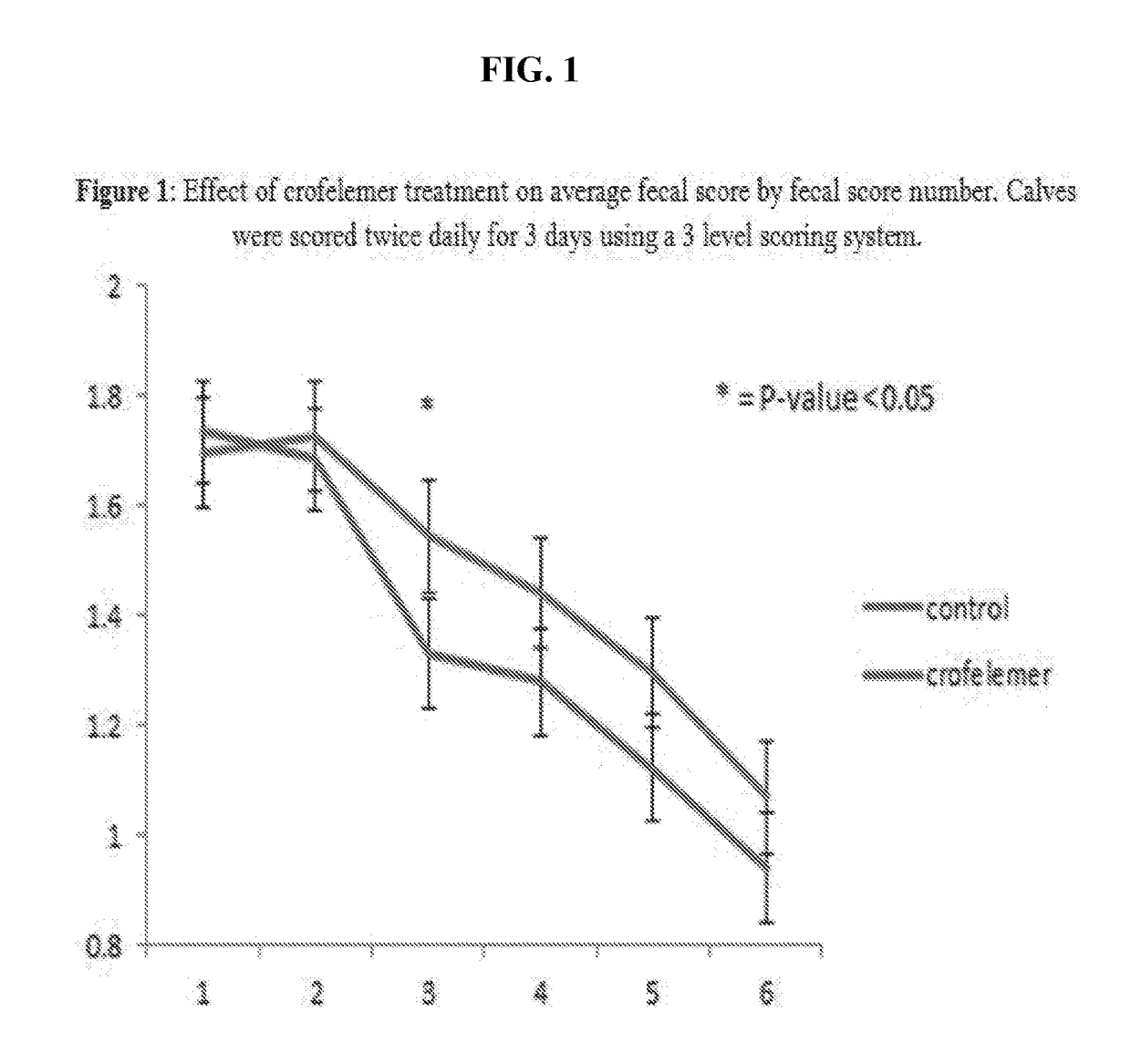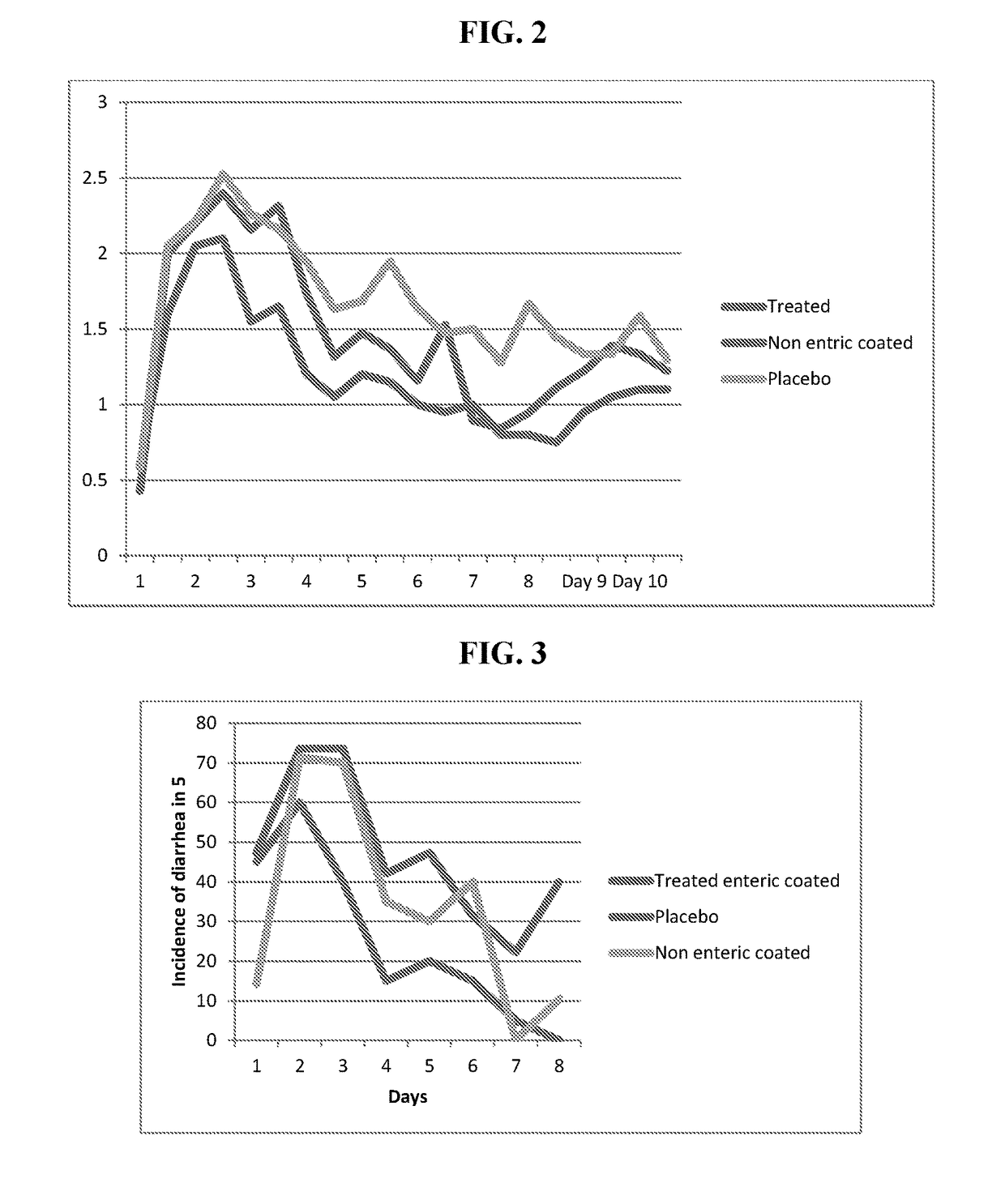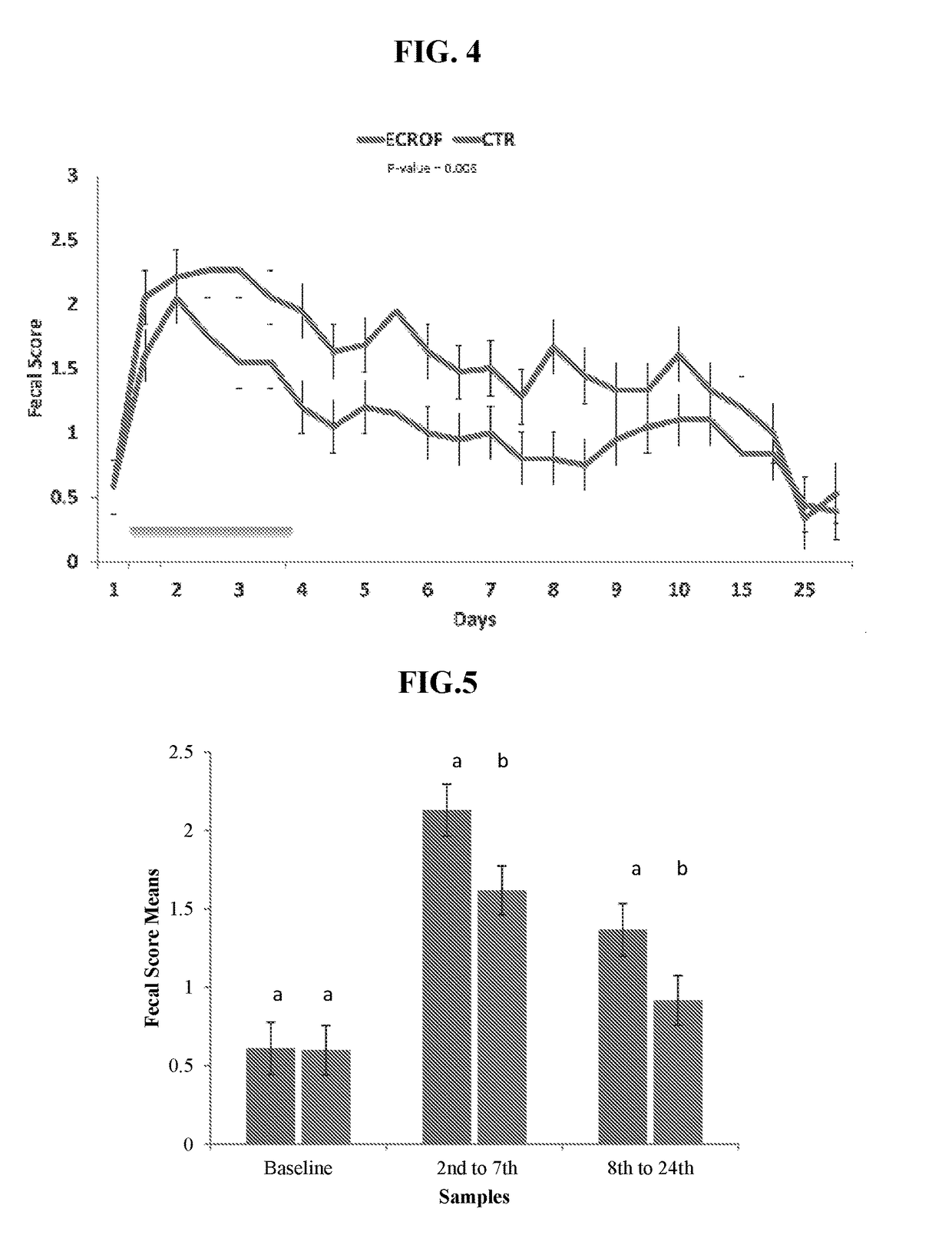Methods Of Treating Diarrhea And Promoting Intestinal Health In Non-Human Animals
a non-human animal and diarrhea technology, applied in the field of neon diarrhea treatment, can solve the problems of measurable morbidity and mortality in many millions of animals worldwide, and extremely common infectious diarrhea of neonatal animals, so as to improve the overall intestinal/gut health of the animal, increase the average daily weight gain, and improve the effect of overall intestinal/gut health
- Summary
- Abstract
- Description
- Claims
- Application Information
AI Technical Summary
Benefits of technology
Problems solved by technology
Method used
Image
Examples
example 1
Control of Diarrhea in Neonatal Camel Calves Treated with a Composition Containing a Proanthocyanidin Polymer or Oligomer Extract from Croton Lechleri
[0111]Neonatal diarrhea remains one of the most common causes of death in young camels. Enterotoxigenic E. coli (ETEC) and rotavirus appear to be the most significant infectious causes of diarrhea during the first week of a newborn camel's life. Salmonella is also a problem in older calves. The pathophysiology includes induction by toxins of the secretion of water in the small intestine with secretory diarrhea as a result. Regardless of the pathogens involved in the disease process, treatment is aimed at preventing and correcting the resulting fluid and electrolyte deficits. Calves can lose 5 to 10% of their body weight in water in one day of scouring. It is therefore crucial to limit water loss.
[0112]The goal of this study is to confirm the efficacy of a Croton lechleri proanthocyanidin polymer extract composition (NSF) from Napo Pha...
example 2
Evaluation of the Effect of Oral Administration of a Croton Lechleri Proanthocyanidin Polymer Composition on the Fecal Scores of Salmonella Typhimurium-Infected Neonatal Bovine Calves Afflicted with Diarrhea
[0118]Diarrhea remains an important cause of morbidity and mortality in neonatal calves (P. Constable, 2004, J Vet Intern Med., 18:8-17). The economic losses associated with this disease are due not only to the resulting mortality, but also to the retarded growth of the animals, the cost of both the veterinary care and the drugs used to treat the infection, and the increased labor involved (D. C. de Graaf et al., 1999a and 1999b, Int J Parasitol., 29:1269-1287 and 1289-1306). Several enteropathogens are associated with diarrhea in neonatal calves, the most prevalent being Escherichia coli, Clostridium perfringens, Salmonella spp., Cryptosporidium spp., and rotavirus and coronavirus, with their relative importance varying by geographic region (D. R. Snodgrass et al., 1986, Veterin...
example 3
[0123]Treatment of E. Coli Challenged Calves with a Croton Lechleri Proanthocyanidin Polymer Extract Composition SB-300
[0124]This Example describes another bovine calf study that was conducted in the isolation unit at Cornell University, Ithaca, N.Y., in which the calves were treated with either enteric or non-enteric formulations of crofelemer, the Croton lechleri proanthocyanidin polymer extract composition. All calves were male Holsteins from the same dairy farm in upstate New York. The calves' weights at birth ranged from 57 pounds to 106 pounds.
[0125]In this study, calves were clean caught and within two hours were transported to an isolation facility for research animals (Cornell Animal Research Facility, Ithaca, N.Y.). Calves were individually housed in 16 square meter rooms with controlled temperature and humidity. For the clinical trial, the calves were challenged using an enterotoxigenic E. coli serotype O9:K35:K99 (ATCC #31616). After standard bacterial activation, E. col...
PUM
| Property | Measurement | Unit |
|---|---|---|
| weight | aaaaa | aaaaa |
| weight | aaaaa | aaaaa |
| weight | aaaaa | aaaaa |
Abstract
Description
Claims
Application Information
 Login to View More
Login to View More - R&D
- Intellectual Property
- Life Sciences
- Materials
- Tech Scout
- Unparalleled Data Quality
- Higher Quality Content
- 60% Fewer Hallucinations
Browse by: Latest US Patents, China's latest patents, Technical Efficacy Thesaurus, Application Domain, Technology Topic, Popular Technical Reports.
© 2025 PatSnap. All rights reserved.Legal|Privacy policy|Modern Slavery Act Transparency Statement|Sitemap|About US| Contact US: help@patsnap.com



